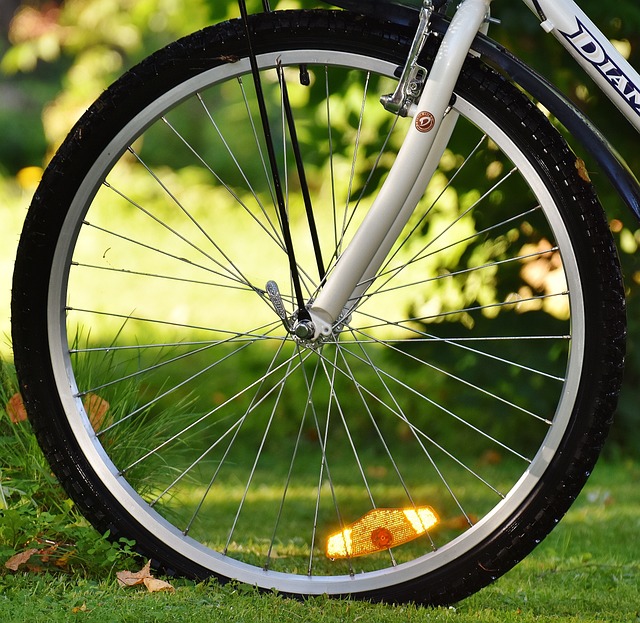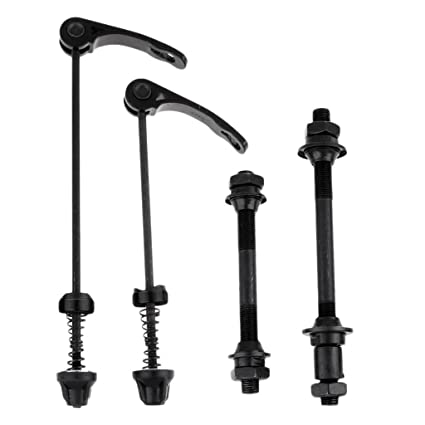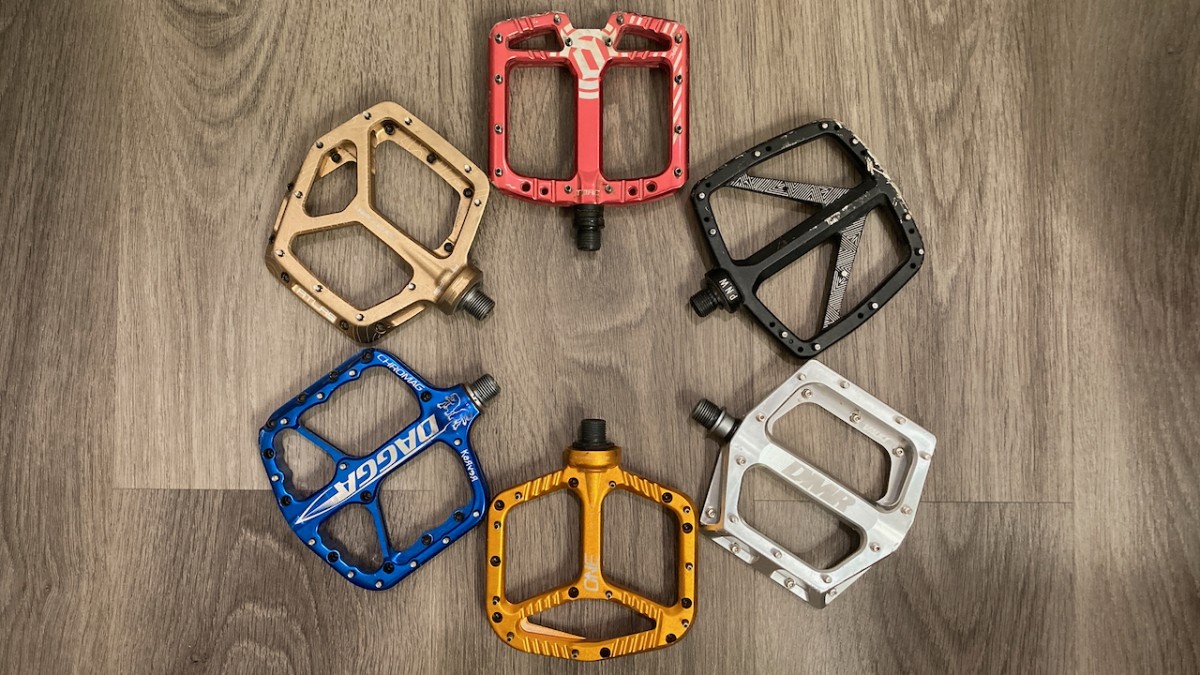10 Innovations That Transformed the World of Road Cycling
Road cycling has always been one of the most favorite sports since 1900. But, initially cycling was not invented for sporting or leisure purposes. It was to transport food and raw materials since using horses for transportation was expensive.
As technology evolved and created a revolution in every stream possible, the types of bicycles and the way they were made, and every technology associated with it also underwent a major change.
Every change that has been associated with cycling has helped the sport come a long way. It has also made more people become a part of and take cycling seriously.
In this article, our expert team will guide you through the innovations that changed the world of road cycling. Every major innovation that has made road cycling evolve and stay on track will be briefed for you to get a better understanding of it.
Innovations That Changed The World Of Road Cycling
1.Wheels

Basic principle that lies behind the functioning of the wheel has remained the same since the 1900s. Additions to the functioning of the wheel have evolved beautifully since then. A set of spokes holding the rim to a hub is the basic functioning of a wheel. It is highly unbelievable that wood was used for the wheels. It must have been really hard for the riders to balance the weight of the wood.
As the technology evolved and innovations were made after thorough research on the quality and suitability of the materials. Items used to manufacture the wheel have changed and the way of manufacturing them has evolved. Elements of a wheel include a rim, hub, spokes, axle, bearings, and nipples.
- Rim - Outer edge of a wheel that holds the tire and the tube. In short, it is the circular design of the wheel that is sturdy to hold the tires and the tube
- Hub - The center section of a bicycle that allows the wheel to move freely
- Spokes - Connecting components between a hub and the rim. Earlier, spokes were made of wood. It was heavy and needed a lot of energy and took time. Tangent spokes were introduced in the late 1900 to make riding easy. It was durable and drastically reduced the weight of cycles and also enhanced the mechanism. While the only difference was their weights. Today’s spokes are made of steel that is lightweight and strong
- Axle - A rod that attaches to the wheel of the bicycles for easier movement
- Bearing - An element that helps to reduce the friction when the wheel spins
- Nipple - A nut at the end of each spoke to connect it to the rim and to provide firmness when spinning
2.Skewers

Quick-release skewers are one of the glorious inventions to make gear shifting effortless and trouble-free. Tullio Campagnolo, an Italian bicycle racer invented the quick-release skewers after he lost in a bicycle race. He was not able to shift the gears as the cold weather made his hands numb. This loss urged him to invent the quick-release skewers.
Post the invention of skewers, riders were able to cycle through without any hardships. Skewers were made of aluminum and titanium to save the cost and also they weighed lighter when compared to steel. Today’s skewers are mostly made of strong steel. It is only a few grams heavier than titanium and aluminum.
Front skewers are more of a fashion manual rather than safety-focused. Rear skewers are more for safety purposes and to keep the wheel freely rotating.
3.Pedals

Initially, bicycle pedals were relatively large and flat as the shoes used in earlier days had rigid soles. These pedals were termed platform pedals. Riders were given the option to attach the shoes to the pedal with a toe clip and clipless pedals to ease their movement. Toe clips were used to hold the foot in place by using a basket and strap device.
Quill pedals are one of the most common pedals that have an attached crank arm and a cage-like parallel plate which has to be pushed against to pedal. This cage-like structure prevents the shoes from falling off the pedals.
Today, cyclers are blessed with clipless pedals that work by the mechanism of clipping the shoe, thus holding it firm. Clipless pedals come in two variants - float and cleats. Float is the amount of horizontal movement that is allowed by your pedal. This helps you to move your foot thus avoiding knee aches and injury. Cleats are pedals that have a piece of metal attached to them to place your soles on them. The cleat does not allow much foot movement.
- Suitability- Float will be highly suitable if you are a person with a knee injury or knee aches. The floating variant allows horizontal knee movement. Cleats might cause you aches as they don't allow movements. It is highly suitable for you if you are a person who doesn't encourage much movement
- Material- Cleats are made from resin to lower the weight and offer more friction. Carbon fiber is an excellent option but it may charge high
4.Tires

It is highly unbelievable that people rode around in their cycles with huge wagon wheels that bumped all through the roads. It must have been really hard to manage the weights and balance them to ride the bikes. Later, iron bands were wrapped around the wooden wheels. Technology has gifted modern cyclers with low-weight and easy-to-move-around tires.
The pneumatic tire was introduced by John Dunlop and rolled around by filling the air in it. This changed the entire future and perspective of cycling. The year 1891 saw a huge change in the pneumatic tires which was done by Édouard Michelin. His innovative ideas helped to remove the inner tube of the tire for repair and maintenance purposes which made the task easier. It also aided in easier movement.
Manufacturers have been consistently trying their hands to refine the basic purpose. Today’s cyclers have developed a connection with tubeless tires that protects the riders from punctures, incorrect fitting, and tire bursts. A tubeless tire has an airtight rim, valve stem, spoke holes, and tire bead set. Liquid sealant is added inside the tire to prevent the tire from minor punctures and leakage. Pinch flats are eliminated when the tubeless tire is in place. It helps to use low air pressure for better traction.
5.Gears

Gears are the different speeds that are used on a bicycle. It is vital to understand the concept of gears before you start pedaling. Be it a beginner or an expert mountain rider, failing on the gears would either land you up on your bike or your bike landing up on you.
The invention of gears dates back to 1885 when John Kemp Starley tried his hands on the chain drive bicycle. Early riders had to remove the wheel, flip it over and refit it to change the gears. Enhancements and evolution of gears make the current-day riders enjoy their ride by flying through the roads. Four types of gearing systems are found in the modern cycles. These include,
- Single
- Fixed
- Hub
- Triple
- Compact
The number of chainrings does not indicate more speed and a lower number of gears does not make it a slow cycle. It depends on the efficiency of the bike and the techniques to shift gears.
6.Shifters

Shifters are the components that are used to change the gears in a bicycle. The mechanism is controlled by operating a cable that connects the gears with the shifters. Gear shifting on bicycles is either done by releasing or retracting the derailleur cables. The most common types of shifters include
- Trigger
- Twist
- Integrated brake-shifter
7.Brakes

Brakes are generally used for reducing the speed of bicycles. In earlier days, the braking system was not developed as there was no necessity for them. The structure of the bicycles made them stop it by placing their foot down on the surface.
As the structure and principle of bicycles changed, the need for a braking system emerged. The braking mechanism was designed for the efficient functioning of the bicycles. Friction is created between the brake pads and the tires when the rider applies the brake. Three vital elements are needed for the braking system to function properly. These include,
- Brake levers- Found attached to the handlebars that are easily reachable by the rider. If the rider wants to slow down the speed he can apply pressure on these levers which are connected to the hoses or chain
- Bicycle chains/ hoses- The instructions given by the rider by acting on the brake levers are transmitted to the other end employing these bicycle hoses or rods
- Caliper- Presses the surfaces of the tire when the signal is transmitted. This creates friction thus reducing the moving speed of the bicycle
8.Lycra

Lycra is a fiber that assists the rider in comfortably cycling around without concentrating on clothes. The stretching capacity of the lycra helps the rider to stretch and move as the fabric is flexible. Lycra helps to hold the knee pads and guards in place thus avoiding inconveniences.
In the earlier days, cyclers used steaks in their shorts as guards. Manufacturers have developed the structure of lycra with guards at appropriate places that vary according to size, gender, and leg length. Spandex was mixed with nylon to gain elasticity and stretch.
However, the lack of moisture was a drawback. A mixture of spandex and polyester are used to gain the needed moisture and promote blood circulation. Ensure the correct fit when choosing cycling shorts. Fabric and the fit should be comfortable for you to ride. It should not cause any trouble. Wrinkles should not be there when you put on your shorts.
9.GPS Trackers
Earlier, cyclers had to work on a particular structure of routes beforehand and had to carry a paper route map along with them. This caused a lot of trouble as they had to stop their bikes mid-way to look for routes. There were also issues of them getting spoiled because of rain and mud.
Technology gifted riders with GPS tracking devices that had many ancillary features with it. Trackers are one of the marvelous innovations that changed the world of road cycling. Cyclers wanted to keep a track of their status and also wanted to know their vitals for the ride.
GPS trackers helped them in understanding the route map and also assisted them with the maps throughout their ride. It also showed them the difficulties in various routes. This enabled the riders to be wise and choose the right routes.
10.Led Lights

Lighting is one of the essential things when you ride a bicycle. Earlier, cyclers and commuters used fire-lit lanterns in the bicyclers to help them find their way at night. Post-oil lamps and electric-powered bicycles were in use. Lead-acid batteries helped light the cycles. Later, dry cells came into the place of lead-acid batteries. Halogen lights were introduced for off-road biking that was rechargeable.
Led lights were used in modern-day bicycles to direct the cyclers and also to make them visible on the roads. This also helped to prevent accidents and thefts. The use of bicycle lighting at night has been made compulsory as a basic safety precaution.
Conclusion
Cycles and riders have been getting evolved from the day cycles were invented and put to use. Every single improvement has been a boon to mankind. Riders themselves have tried their hands at inventing new ancillaries to make their riding experience better.
Hope our article has served its purpose and has helped you understand the innovations that have changed the world of road cycling.
Disclaimer - The images inside the article were collected from the internet. We do not own any of them.

